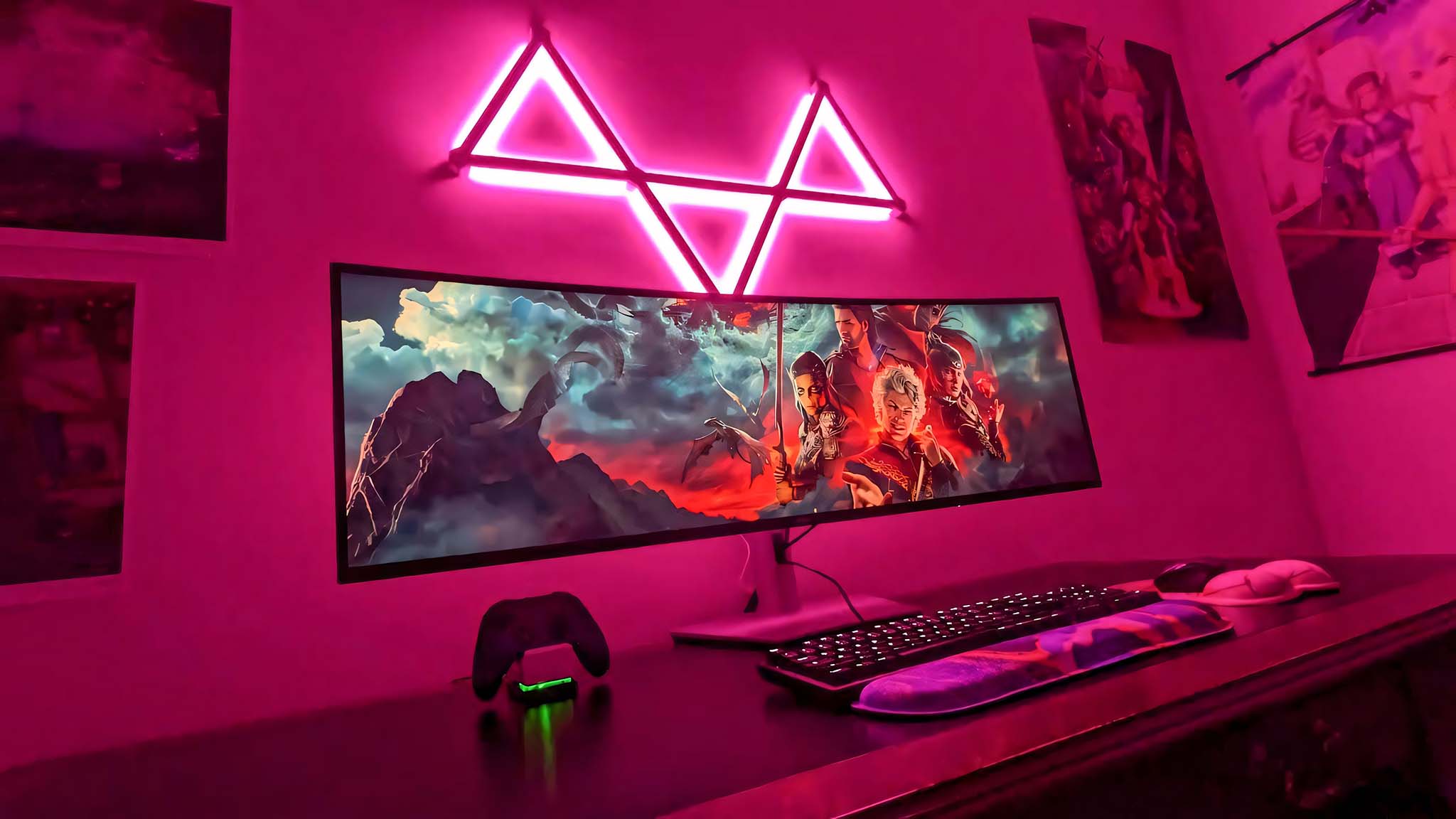
As a seasoned gamer and tech enthusiast with years of gaming under my belt, I can confidently say that the type of screen you choose for your gaming setup is just as important as the games themselves.
When it comes to picking a new gaming monitor, the rapid advancements in PC hardware performance can make the shopping process overwhelming. You wouldn’t want a screen that outpaces your computer’s capability, nor one that’s too small for your preferences or preferred game genres. Furthermore, selecting an incorrect aspect ratio or size for your workspace could lead to an unsatisfying experience.
Common gaming monitor sizes span from 24 inches all the way up to 40 inches and larger, featuring a variety of resolutions. In this guide, I will discuss how monitor size correlates with resolution and game genres, aiming to assist you in finding an optimal screen for your gaming computer.
Choosing a monitor size based on resolution
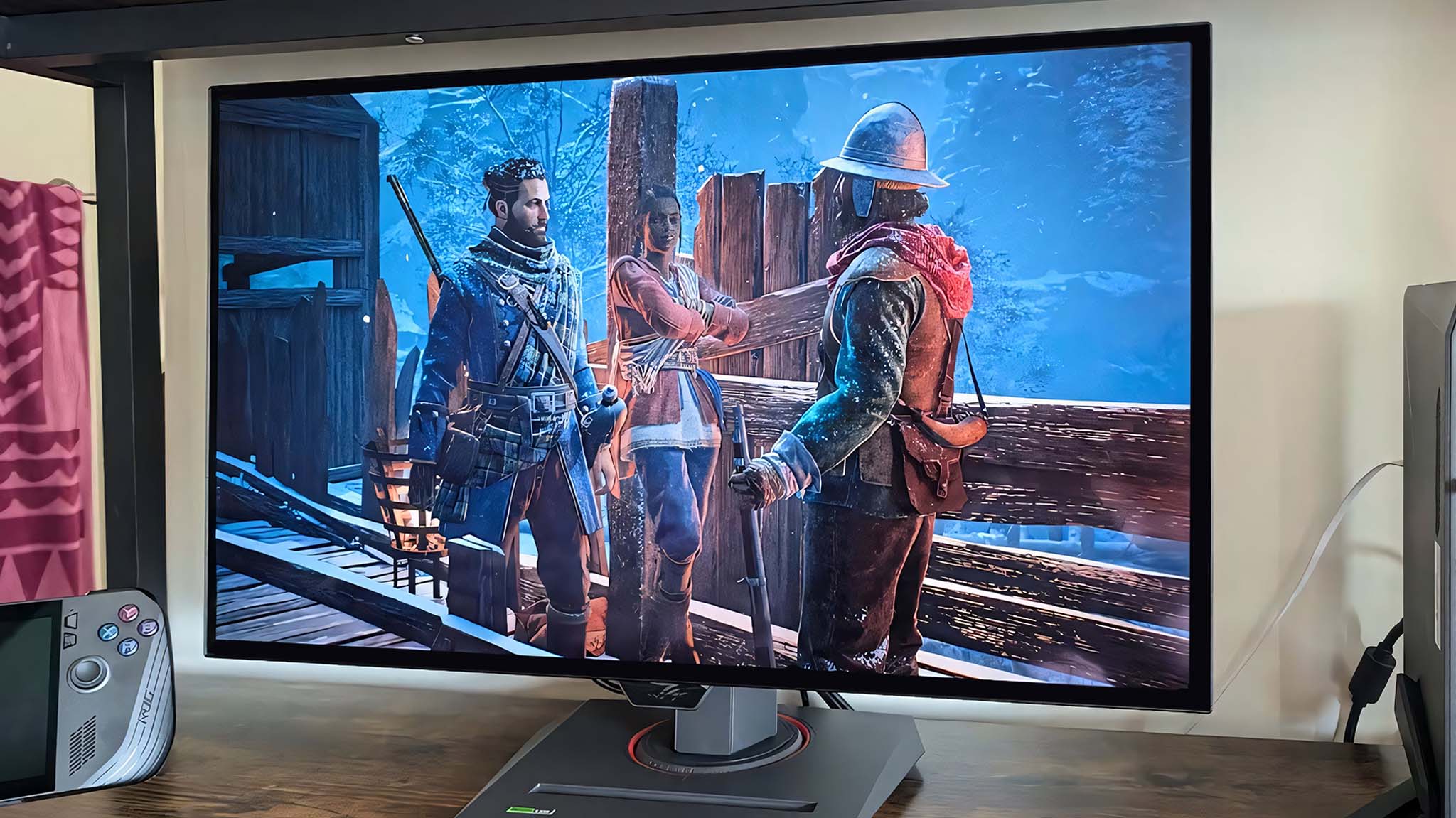
Before selecting a monitor size, it’s essential to identify the optimal resolution for your PC’s hardware specifications. If you aim for high frame rates at 1080p, you’ll likely prefer a different screen size than if you opt for a higher resolution like 1440p or 4K.
It’s only you who truly understands the real potential of your gaming computer. For instance, if you’ve constructed a setup with components tailored for 1080p resolution, investing in a 1440p monitor might not benefit either you or your machine.
👀 What is Super Resolution? NVIDIA DLSS, AMD FSR, Intel XeSS, and Microsoft DirectSR explained
Increasing the number of pixels displayed on your computer screen may lead to smoother visuals with improved detail, but it could slow down the frame rate, causing a jerky and unappealing performance. To enhance your gaming or graphic design experience, consider purchasing a monitor that is compatible with your PC’s graphics card’s variable refresh rate technology, such as NVIDIA G-Sync or AMD FreeSync. Many monitors currently offer support for both technologies.
Here, I will delve into the most favored screen sizes associated with prevalent gaming resolutions, but let me first clarify some frequently used terms you may encounter while selecting a monitor.
- Full High Definition (FHD): 1920×1080, aka 1080p
- Quad HD (QHD): 2560×1440, aka 1440p
- Ultra HD (UHD): 3840×2160, aka 4K
- Pixels-per-inch (PPI): The number of pixels in a one-inch line on your display
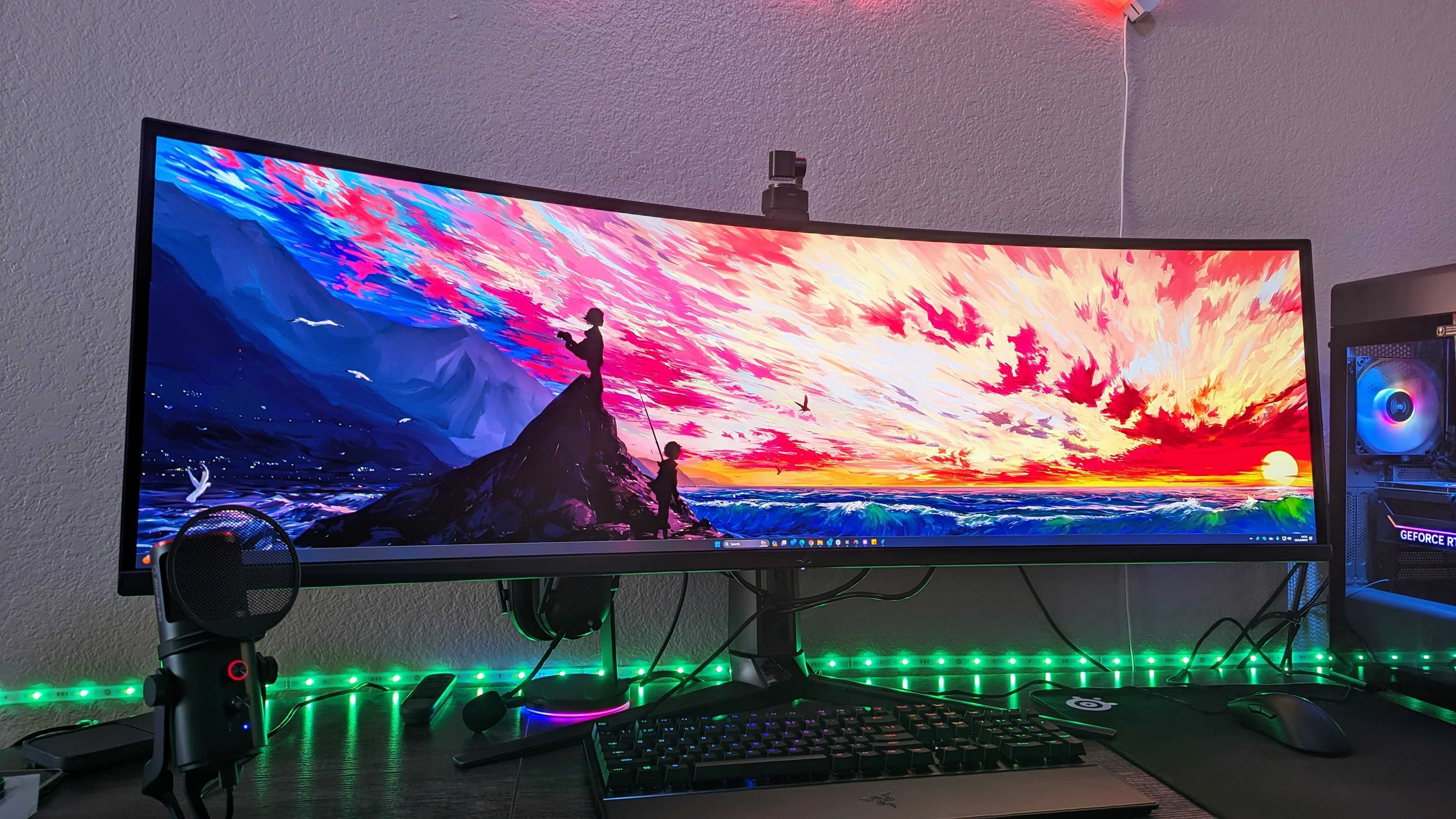
Best gaming monitor size for 1080p
For gaming at 1080p (Full High Definition), a screen size of about 24 inches is usually ideal. When considering pixels per inch (PPI), a 24-inch monitor with a resolution of 1920×1080 results in approximately 91.79 PPI, which provides decent clarity for gaming, even in competitive titles. Additionally, these monitors are often quite affordable.
Enlarging the display to a size of 27 inches reduces its pixel density to approximately 81.51 pixels per inch (PPI). For certain individuals, this may suffice, but due to its substantial size, one might observe some degree of blurriness when viewing content in 1080p resolution.
1080p monitors often boast high refresh rates because they handle fewer pixels compared to larger displays. Consequently, your computer finds it less taxing to render frames, allowing for smoother and faster performance.
👀 Titan Army P2510S budget gaming monitor review: 240Hz, 1ms, and a great budget choice
Best gaming monitor size for 1440p
A generally recommended monitor size for a 1440p (QHD) display is approximately 27 inches. Although the screen expansion is just around three inches larger than a 24-inch monitor, increasing its resolution to 2560×1440 significantly boosts pixel density to 108.79 pixels per inch (PPI).
For many PC gamers, including those on the Windows Central team, this is a preferred choice. While it may not suit those deeply involved in competitive shooting games that require constant observation of the entire screen, it generally offers an excellent balance for most gamers, serving as a nearly ideal compromise.
1440p monors are often available in a 32-inch size, reducing the pixels per inch (PPI) to approximately 91.79. This is comparable to a 1080p 24-inch monitor. However, if you prioritize clarity, I’d recommend opting for a 27-inch screen instead. When choosing a monitor, aim for the highest refresh rate you can afford. Many 27-inch QHD monitors offer a 144Hz refresh rate.
💡 Review of ASUS ROG Strix OLED XG27AQDMG: This gaming monitor nearly achieves perfection with its Variable Refresh Rate (VRR) and 240Hz performance
Best gaming monitor size for 4K
From my viewpoint, I find that monitors sized 32 inches and larger offer the optimal viewing experience for a 4K (UHD) resolution, as at this size, the 3840×2160 pixels provide a pixel density of approximately 137.68 Pixels Per Inch (PPI), delivering crisp clarity and definition. Keep in mind that running a 4K display requires a powerful computer, or else investing in one might not yield the desired performance.
On a 34-inch 4K screen, the pixel density comes to approximately 129.58 pixels per inch (PPI). This beats out a 27-inch monitor with a resolution of 1440p in terms of sharpness. Even if we’re talking about a 40-inch 4K display, its pixel density of around 110.15 PPI remains superior.
Additionally, you might encounter 27-inch monitors boasting a stunning 4K resolution. While the pixel density of 163 is impressive, I suggest utilizing the surplus pixels for a more expansive display. The refresh rates in these 4K monitors are no longer confined to 60Hz; instead, you can effortlessly find speeds exceeding 100 to complement the enhanced resolution. However, remember that at 4K, a potent PC is crucial to sustain high refresh rates during graphically demanding games.
👀 This $1,300, 240Hz OLED gaming monitor would be perfect if something didn’t keep falling off
How distance affects size and resolution
The right monitor size for you also depends on how you set up your gaming area. I typically sit at a desk when I game, but I know that’s not the reality for everyone.
For me, the 34-inch ultrawide monitor (offering an extended resolution of 3440×1440) is ideal for work tasks, but when I’m seated approximately three feet away from it, some video genres make the screen seem overly large. This effect is particularly pronounced in fast-paced games like first-person shooters, where you need to swiftly survey every part of the scene for potential threats.
For optimal use on a desk, monitors ranging from 24 to 32 inches should suffice. However, if you’re planning to set up your gaming monitor in a more casual environment, such as with a couch across the room, consider increasing the size to 40 inches or larger and aiming for a 4K resolution for an enhanced viewing experience.
What aspect ratio do I want?
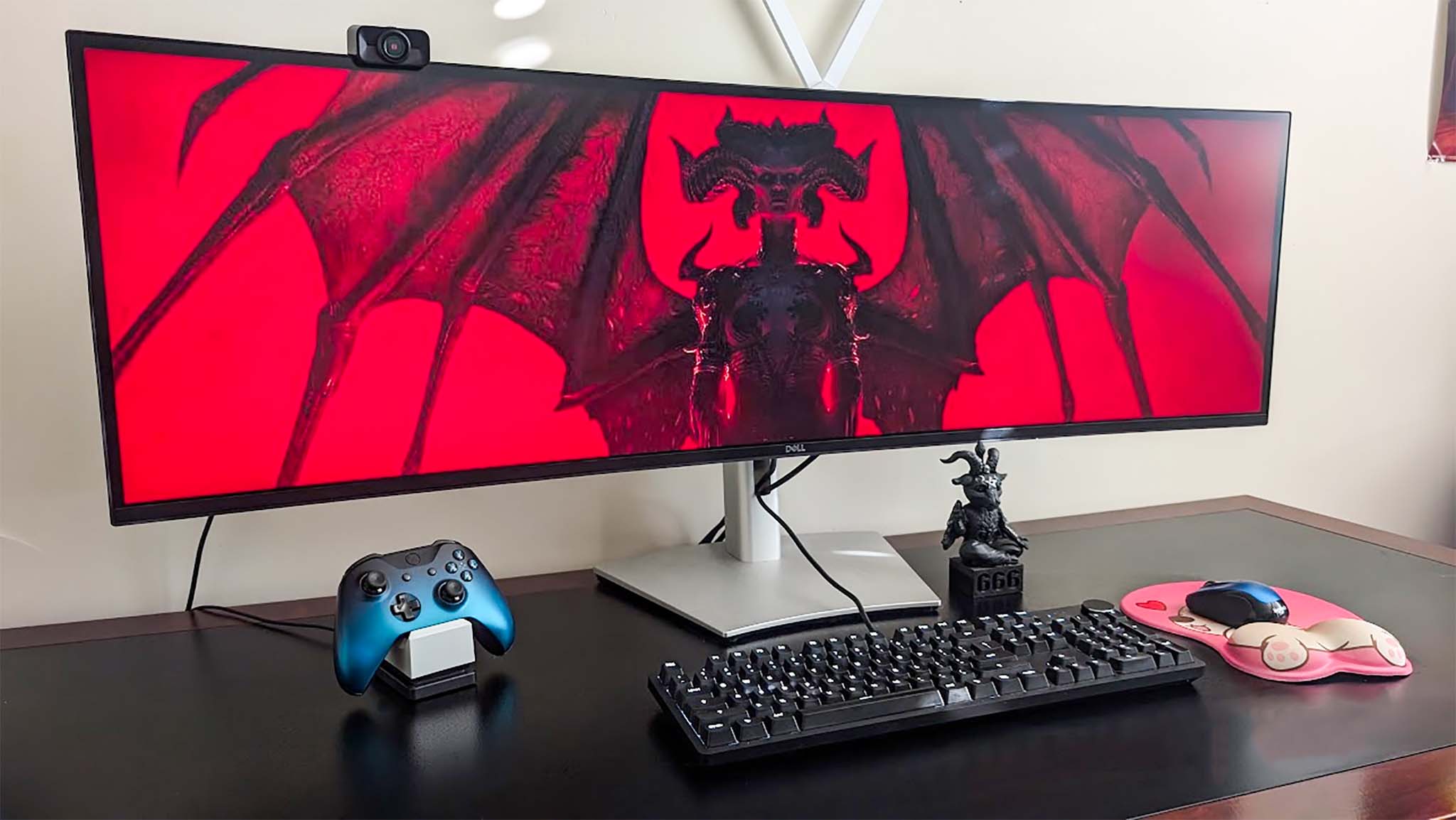
Most gaming monitors typically feature a 16:9 aspect ratio, which is the norm for all external displays. However, more and more productivity-centric screens are starting to provide a slightly taller 16:10 ratio. On the other hand, when it comes to laptops, the preferred ratio has shifted towards 16:10, with certain devices such as the Surface Pro 11 even adopting a 3:2 ratio.
Ultrawide monitors break the mold by expanding the visual display horizontally. Most ultrawide screens boast a 21:9 aspect ratio, often featuring a 3440×1440 resolution. High-end models can even stretch to a 32:9 with resolutions such as 5120×1440. While the vertical resolution may not vary significantly compared to a 16:9 screen.
If you prefer to have a single screen on your desk without additional monitors, ultrawide screens could be beneficial. They are also practical for enhancing productivity. The aspect ratio you require primarily depends on the games you play, and further details about game genres can be found below. However, do consider that ultrawides consume significantly more space, which might overlap with your other gaming accessories for PC.
What panel type should I get?
Typically, gaming monitors feature IPS (In-Plane Switching) or VA (Vertical Alignment) panel types. IPS panels provide wider viewing angles, superior color quality, and swift response times, whereas VA panels deliver outstanding contrast and are often less expensive.
Apart from IPS and VA panels, there are also emerging types such as OLED and mini-LED gaming monitors. Although they come with a higher price tag, they outshine their counterparts significantly when it comes to color and contrast. Currently, I’m using an IPS monitor, but my intention is to upgrade to one of these advanced displays soon after testing several OLED laptops.
Rebecca Spear, one of my coworkers, has penned a comprehensive comparison between OLED, QD-OLED, QLED, AMOLED, and Mini-LED technologies, packed with valuable insights to aid your decision on the optimal choice.
Do I want a curved or a flat screen?
As the size of the monitor increases, you’re likely to encounter more displays with a curved design. However, a curved screen is not essential – in fact, it might cause issues in a multiple-monitor arrangement. Nevertheless, this feature can enhance the viewing experience by providing improved angles and boosting immersion.
Transitioning from a flattened screen to a curved one initially feels different, yet adapting while gaming happens swiftly. Going back to a flat display afterwards will give you the sensation that it’s curving in the opposite way.
If you’re in the market for an ultrawide monitor, I strongly suggest considering a model with a curved display. Since flat ultrawides are not very common, you’ll likely find that your choices are limited, making it an easier decision for you.
Best monitor size by game genre
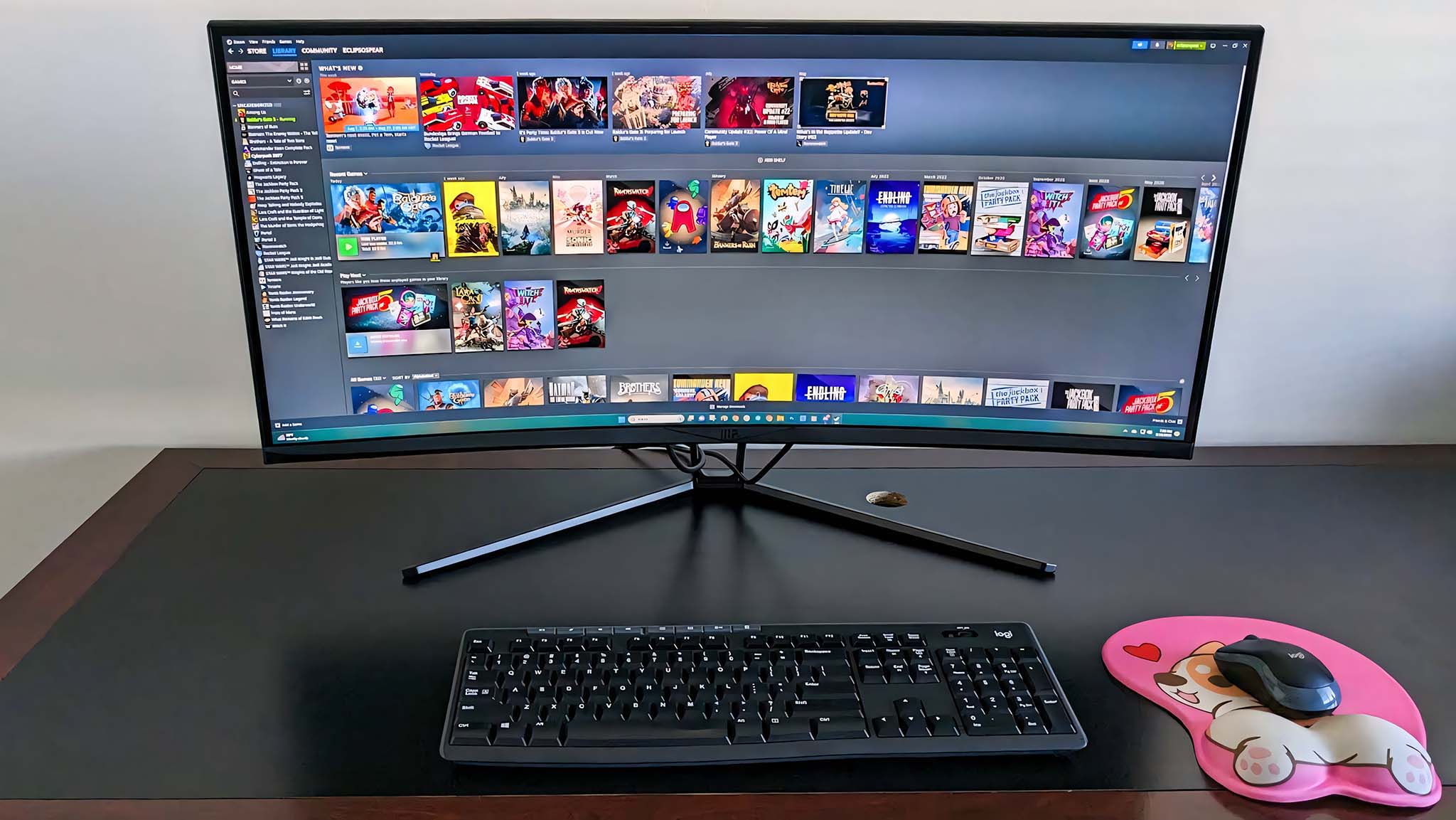
Laying out the ideal resolutions for different screen sizes is one thing, but the types of games you play also have an effect. Gamers focused on one genre will have an easier time choosing a monitor. However, if you’re like me and play all sorts of games, you might have to make some compromises.
For me, having an ultrawide monitor at my workspace is perfect for strategy games, role-playing games, city builders, and racing/flight simulations. However, engaging in a Tarkov raid or playing Battlefield 1 (even though it’s been ten years since its release) can sometimes be too much to handle. With all that screen space, it can be challenging to keep track of everything happening in front of me.
In my past competitive Counter-Strike years, I strongly preferred a 24.5-inch screen setup. Nowadays, an ultrawide monitor suits me perfectly for work and less intense multi-genre games. Let’s delve into the most popular gaming genres and their ideal monitor sizes.
First-person shooters
For optimal performance in fast-paced, competitive first-person shooter games, it’s advantageous to play on a smaller screen, such as one measuring approximately 24 to 27 inches. This is because you won’t need to scan as wide an area to spot targets, which gives you an edge in the game. It’s no coincidence that competitive teams opt against large monitors. For the best experience, choose a screen with a high refresh rate and low response time.
Action, adventure, and RPG
As an avid role-playing game (RPG) enthusiast, I can’t help but appreciate how these games, with their emphasis on exploration, survival, and action, truly shine on larger monitors. They transport you to another realm entirely, offering stunning visuals that only a bigger screen can fully do justice.
For an enhanced user experience, consider opting for a screen size of 27 inches or more, offering a higher resolution. It’s at this point that ultra-wide screens truly prove their worth.
Simulation, strategy, and MOBA
Games that fall under categories such as simulation, strategy, and Multiplayer Online Battle Arena (MOBA) share similarities with Role-Playing Games (RPGs). Expanding the display area for titles like Anno 1800, Diablo, Age of Empires (which are among my favorites), enhances these games by providing a more spacious playing environment.
If you primarily engage in simulation and strategy games, opt for a monitor that is ultrawide or at least 27 inches or more in size. Additionally, a higher resolution might be beneficial as a high refresh rate isn’t as crucial in these types of games.
Racing
For racing games and flight simulators, an ultra-wide screen offers the greatest advantage. This additional screen space enhances the sense of immersion, making it feel like looking through a car or plane windscreen. Moreover, if you’re into competitive racing, having a high refresh rate is crucial. I personally believe that for these types of games, a larger screen is preferable.
Read More
- Forza Horizon 5 Update Available Now, Includes Several PS5-Specific Fixes
- Masters Toronto 2025: Everything You Need to Know
- ‘The budget card to beat right now’ — Radeon RX 9060 XT reviews are in, and it looks like a win for AMD
- Gold Rate Forecast
- We Loved Both of These Classic Sci-Fi Films (But They’re Pretty Much the Same Movie)
- Valorant Champions 2025: Paris Set to Host Esports’ Premier Event Across Two Iconic Venues
- The Lowdown on Labubu: What to Know About the Viral Toy
- Karate Kid: Legends Hits Important Global Box Office Milestone, Showing Promise Despite 59% RT Score
- Eddie Murphy Reveals the Role That Defines His Hollywood Career
- Street Fighter 6 Game-Key Card on Switch 2 is Considered to be a Digital Copy by Capcom
2024-10-28 17:10